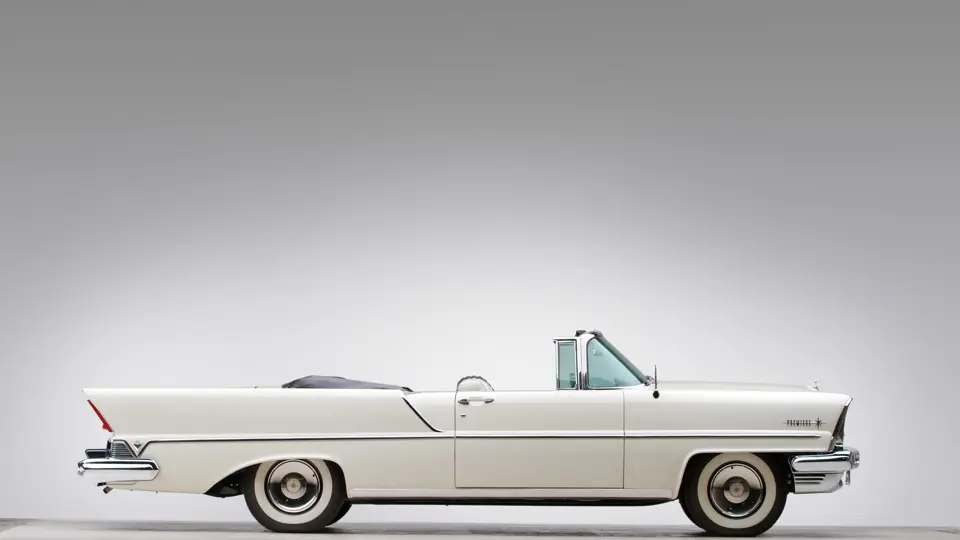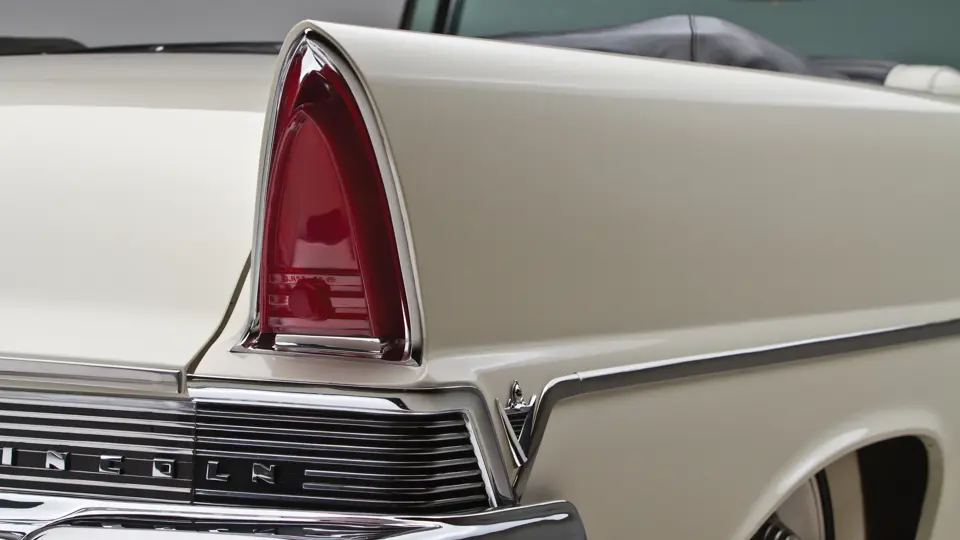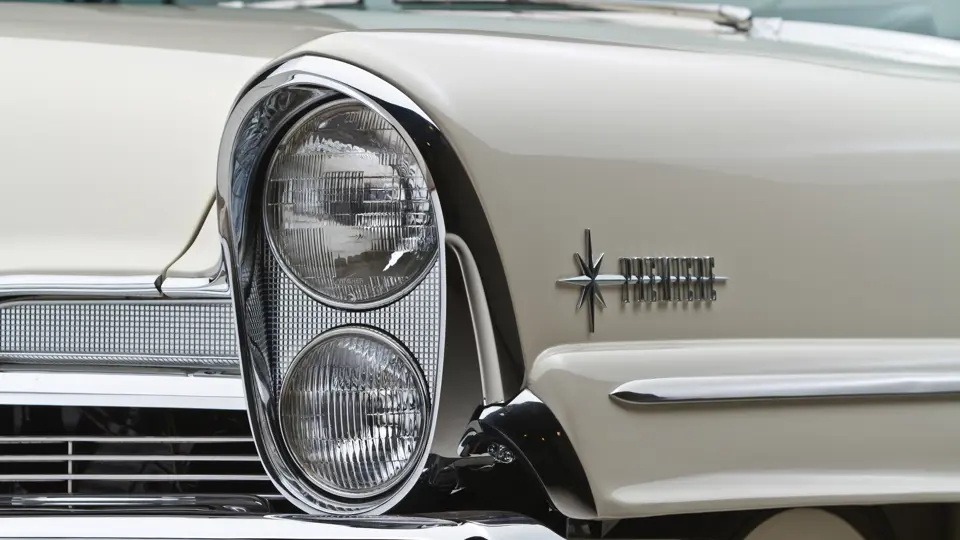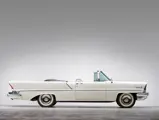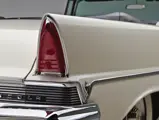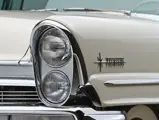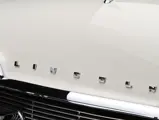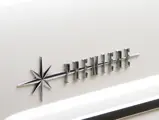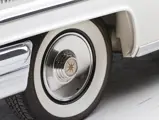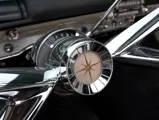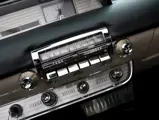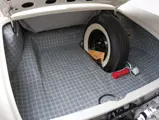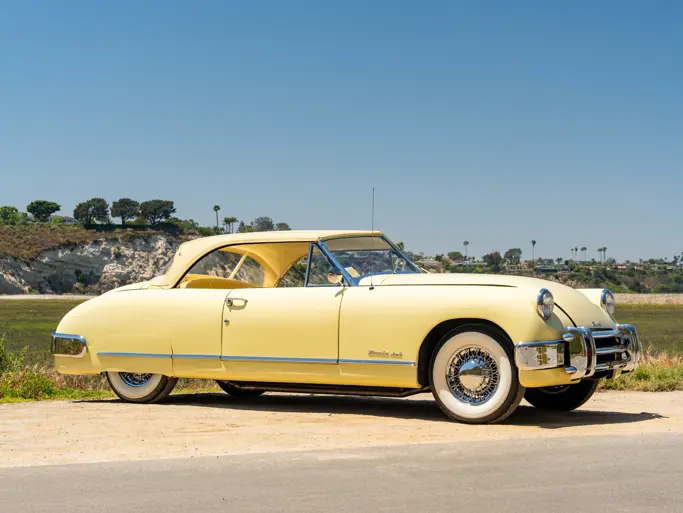An outstanding, fully restored example
300 bhp, 368 cu. in. OHV V-8 engine, three-speed Turbo-Drive automatic transmission, independent coil spring front suspension, live rear axle with semi-elliptic leaf springs, and four-wheel power hydraulic drum brakes. Wheelbase: 126 in.
Lincoln was the Ford Motor Company’s flagship after 1922. After World War II, however, the marque suffered a bit of a comedown. The 1946–1948 models were based on the innovative but mid-priced Lincoln-Zephyr, while the corporate redesign for 1949 had Lincoln sharing bodies with its younger sibling, Mercury. In 1952, new bodies were introduced company-wide, but although post-war sales had been good, Ford was engaged in cutthroat competition with General Motors. So development money for an all-new Lincoln was rationed, with the result that this “new” Lincoln looked much like the Ford and the Mercury.
Lincoln did receive some advances beneath the skin, however. Chief among these was an overhead-valve V-8 engine. Displacing 317.4-cubic inches, it was slightly smaller than the flathead that had preceded it, but it developed more power. A side effect of this new engine was ball-joint front suspension, a concept denied to Ford and Mercury for two more years, since the width of the flathead precluded it. While a very capable car, proving its mettle in the Carrera Panamericana races in Mexico, this era Lincoln competed directly with the Oldsmobile 98, not its traditional archrival Cadillac.
Ford and Mercury received overhead valve V-8s for 1954 and were dramatically freshened in time for the blockbuster five-million-car 1955 season. Lincoln, alas, held pat, with the fourth year of what should have been a three-year design. Only as the 1956 model year dawned did Ford’s “emperor” receive his new clothes.
The longer, lower, totally-redesigned, stunningly-styled, and thoroughly modern 1956 Lincoln was a worthy competitor to GM’s Cadillac. Power was provided by an upgraded overhead valve V-8, with 368-cubic inch displacement and 285 horsepower. The three-speed Turbo-Drive automatic transmission was standard equipment. Even at significantly higher prices, Lincoln sales reached record levels, increasing from 23,673 in 1955 to 41,531 in 1956. The Industrial Design Institute agreed, citing the Premiere hardtop coupe for “excellence in automotive design.”
For 1957, in response to the trends of the time, Lincoln raised the rear fenders into true tailfins and added vertically-stacked quad headlights to the nose. The latter could be reconfigured with fog lights in the few states that had not yet authorized four-headlight arrangements. In a year when auto sales generally rose, Lincoln’s suffered, falling off to 37,850. Alas, the marque would not see that level again for nearly a decade, making this Premiere Convertible Coupe, with 3,676 built, comparatively rare.
Presented in Starmist White, with black-and-white pleated leather upholstery, this car has excellent contours and paint. The brightwork, of which there is plenty, is all in very good condition. The undercarriage is very clean and tidy, showing only minor wear on the chassis frame. It is worthwhile to note that the engine and its bay are also in show quality condition and are very correct throughout. Additionally, the mounting hardware, which is also correct, shows that it has completed a body-off restoration.
Equipped with a signal-seeking AM radio, a rear arm rest with speaker, power vent windows, a power convertible top, power steering, power brakes, power windows, a power seat, and a heater, it has the full complement of luxury equipment de rigeur on a Lincoln. “Bold new ideas in fine car design,” read the advertisements. This car proves there can be truth in advertising.




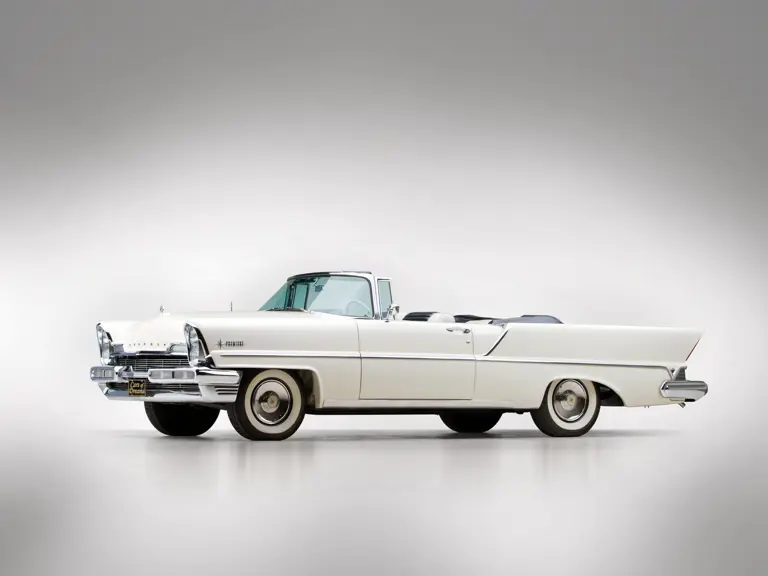
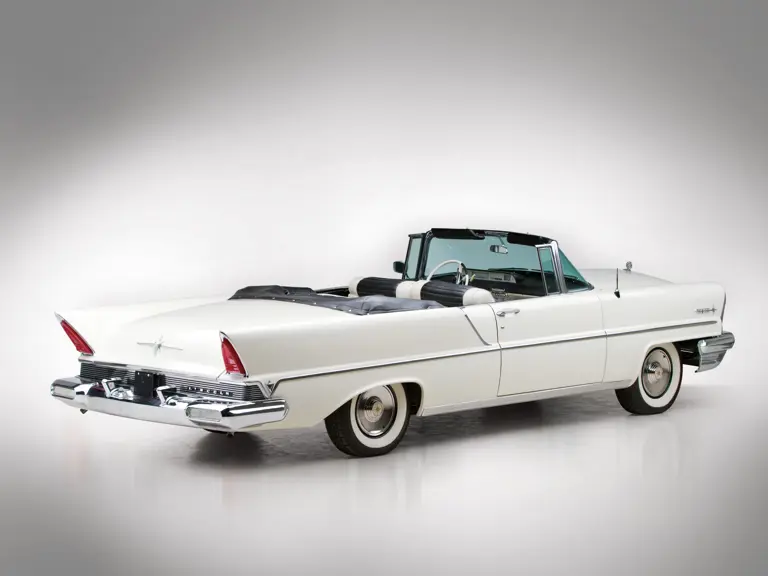
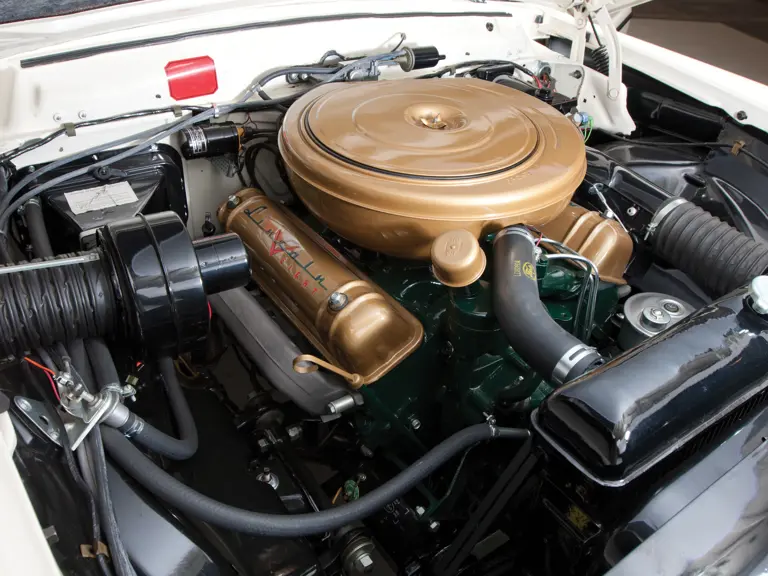
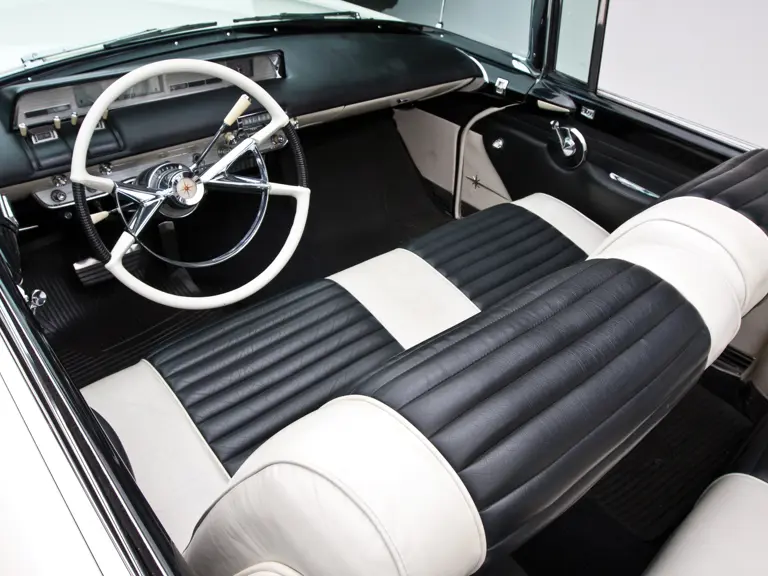

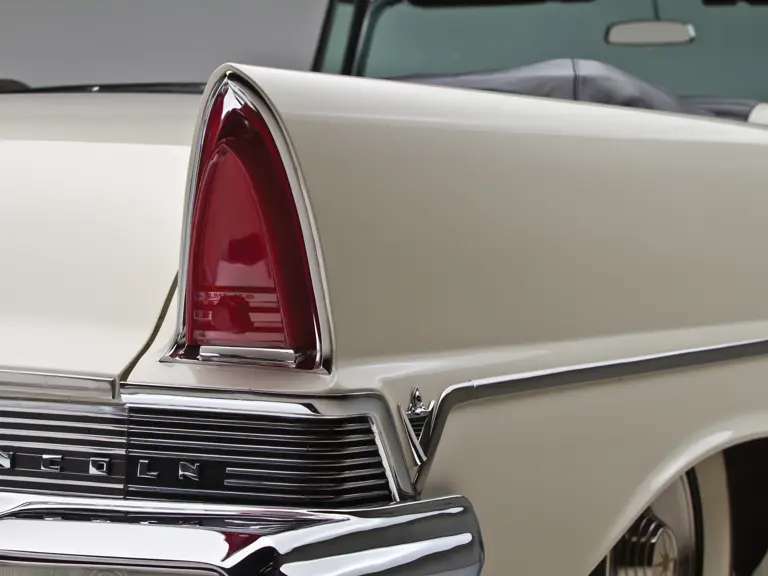
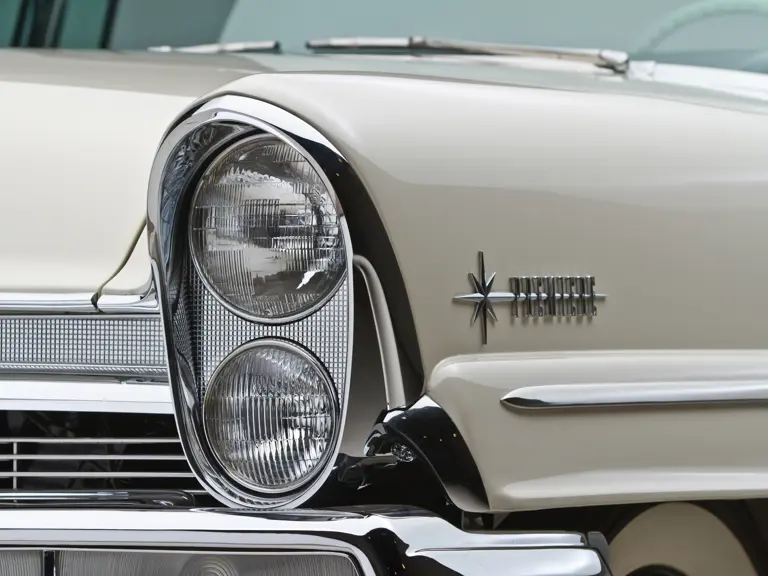
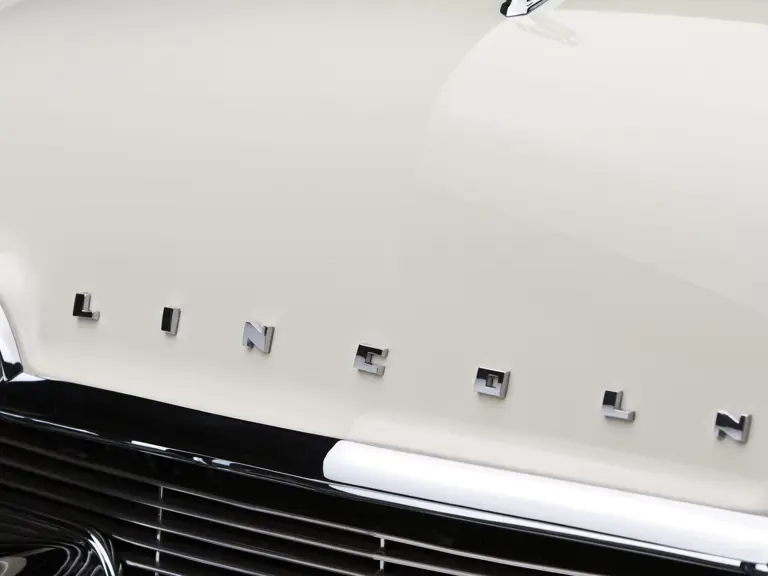
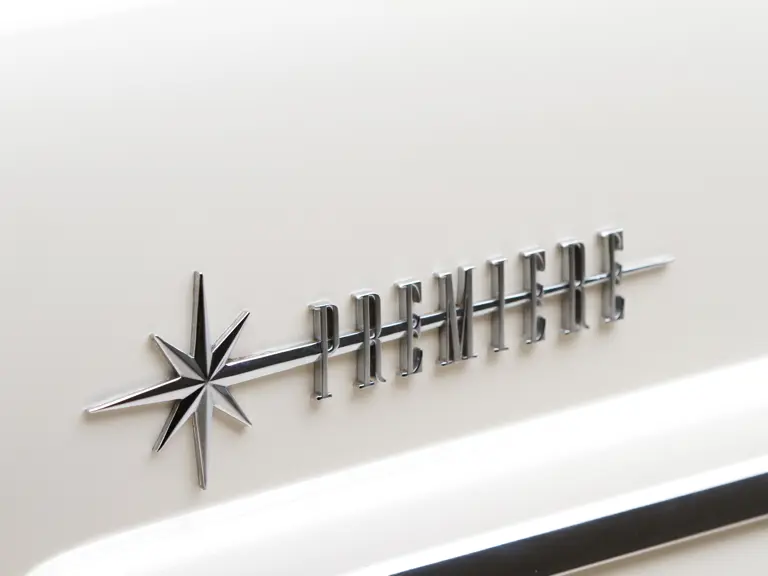

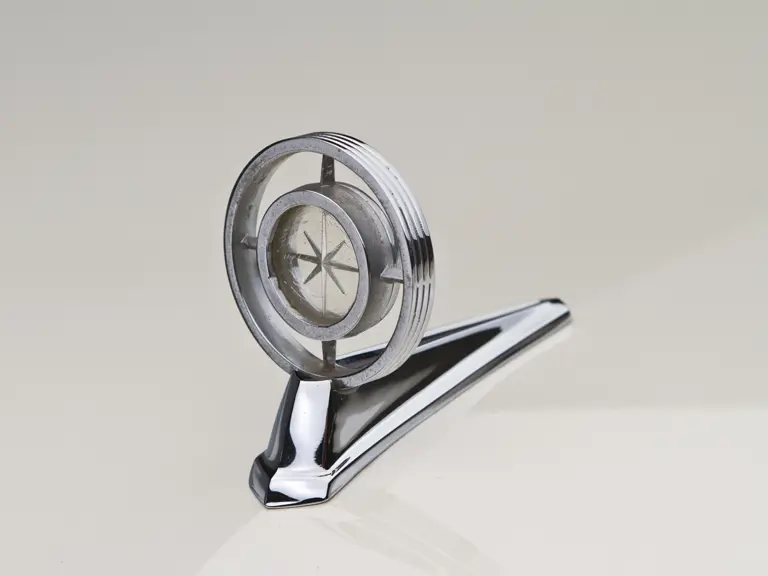
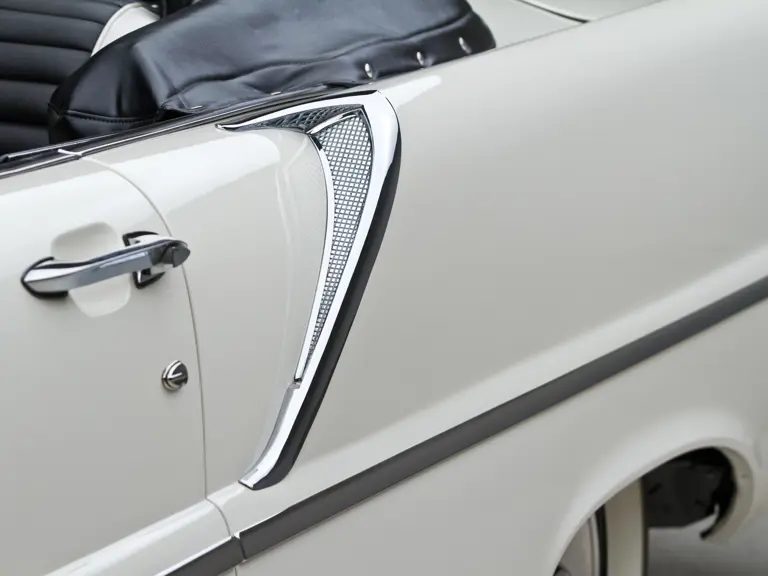
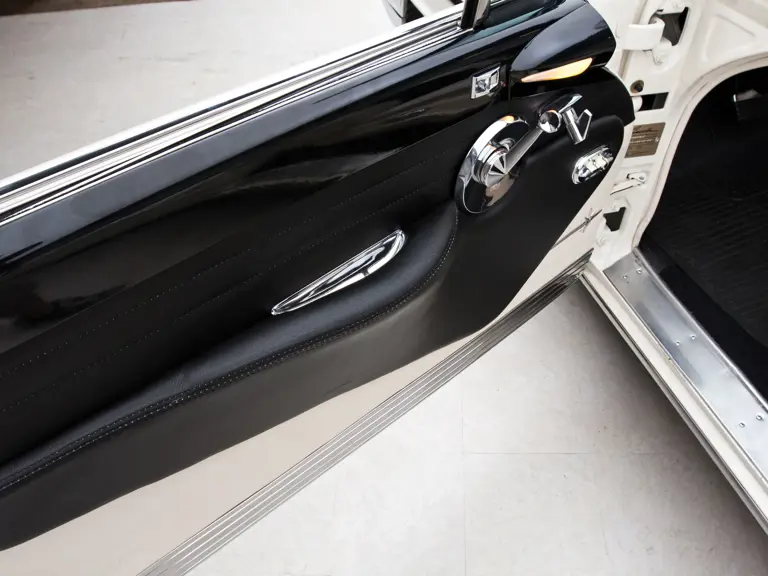

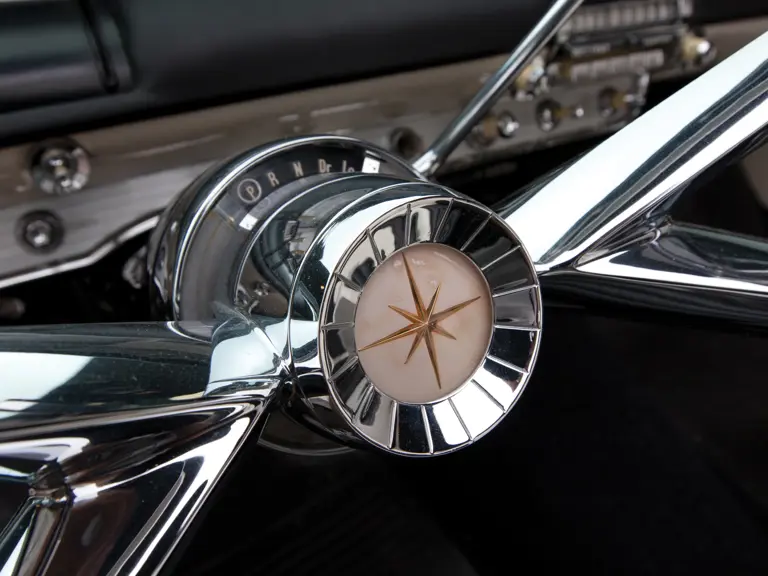
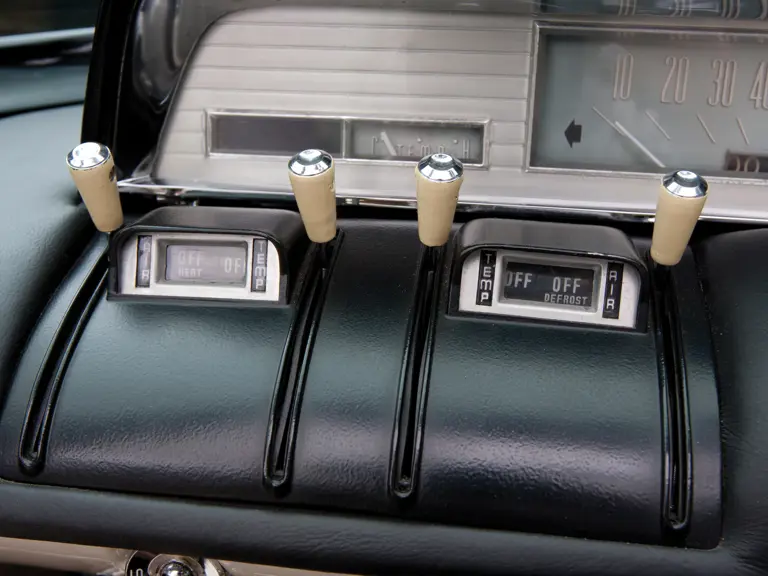
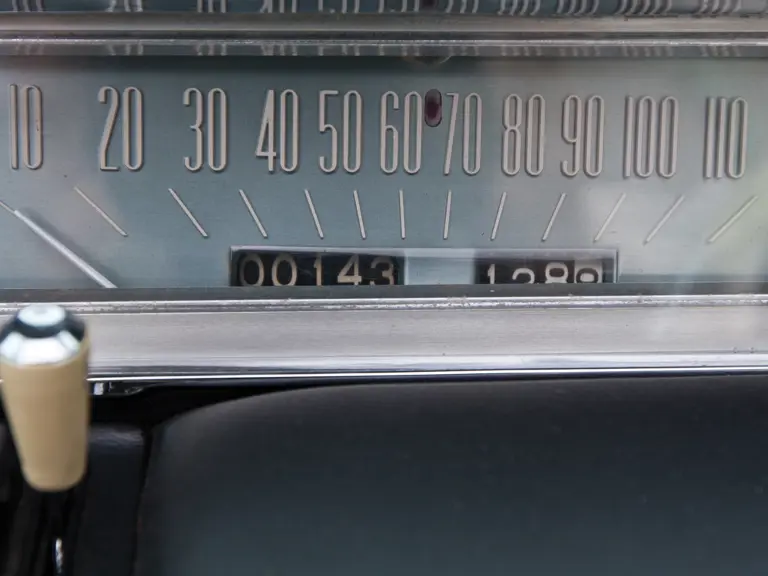

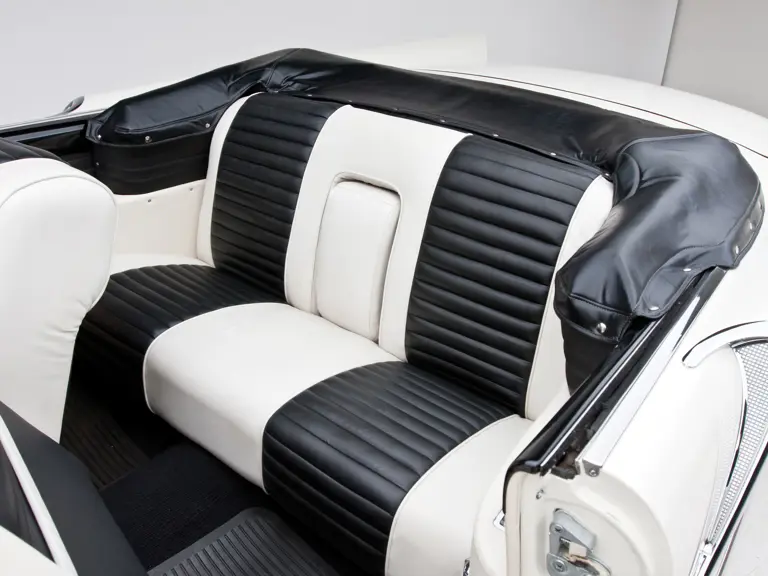
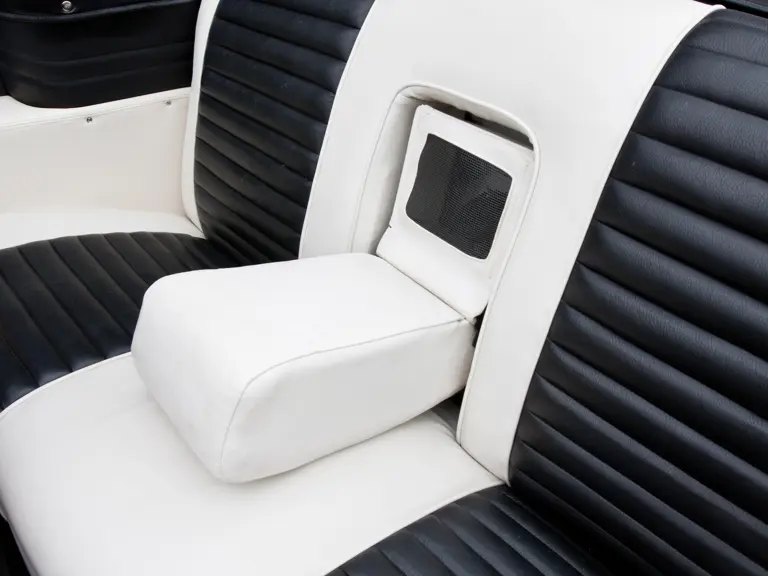
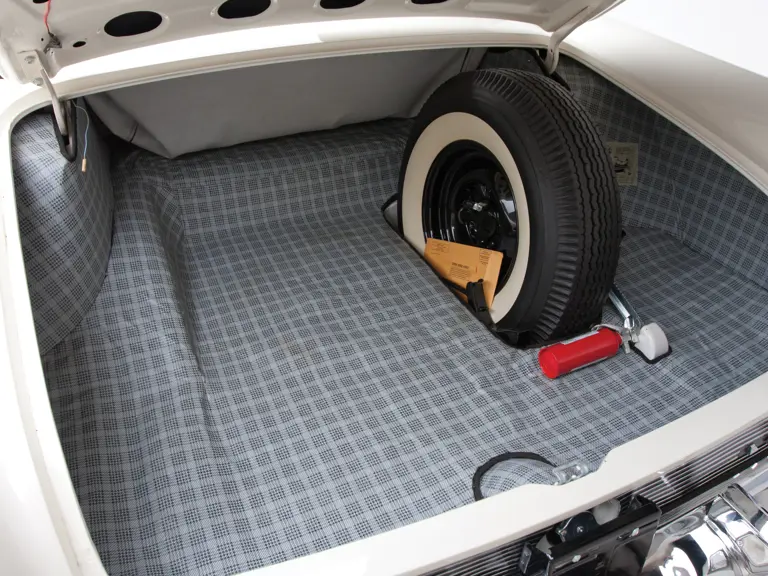
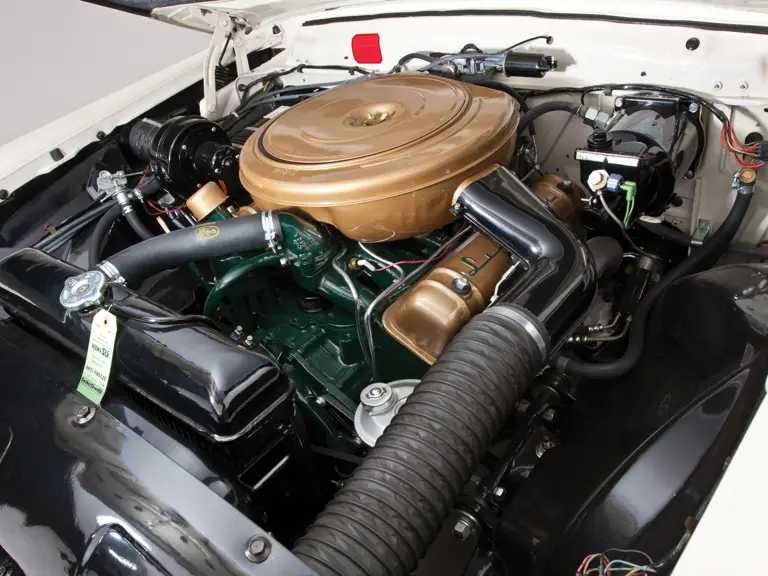
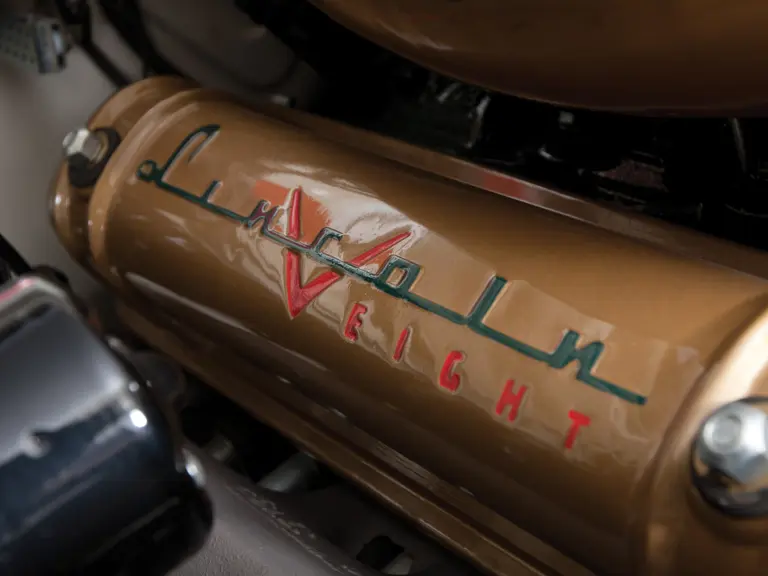

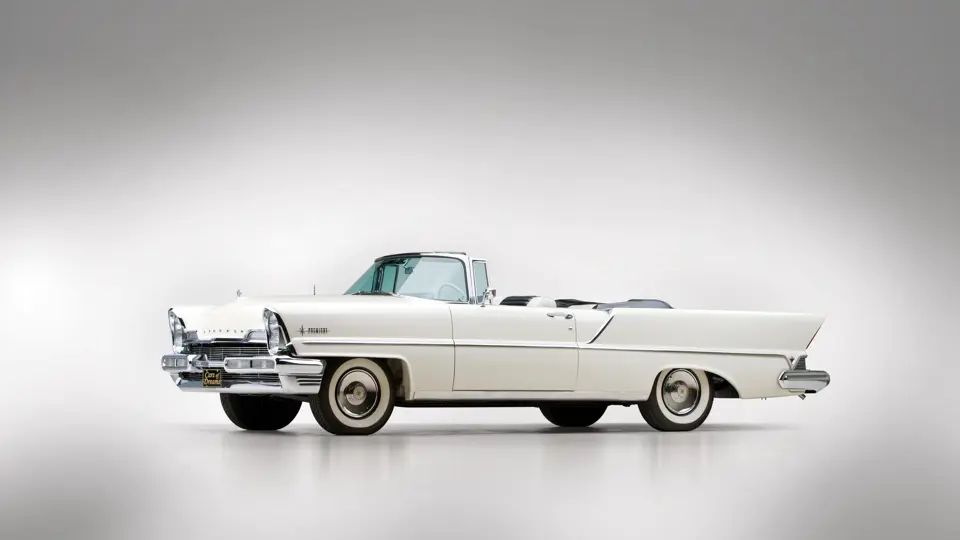
 | North Palm Beach, Florida
| North Palm Beach, Florida
